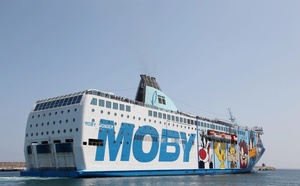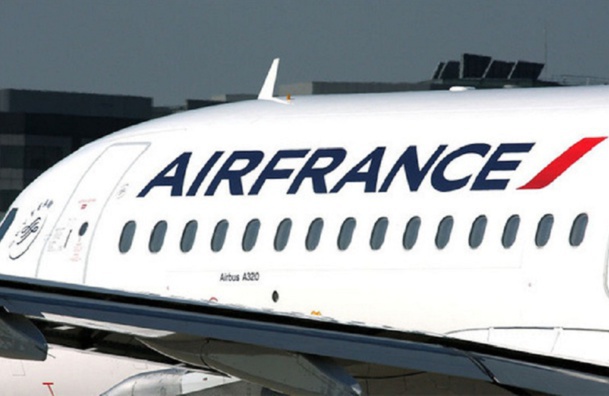
The province bases of Air France are failing; what are their chances of survival? Photo Air France
It’s an open secret: Air France’s province bases are a major failure.
A debacle.
Even Lionel Guérin, the head of Hop! and the future Deputy General Director in charge of the medium-haul admits it without fear.
“The province bases are a failure. The only positive aspect is the proximity of the air crew to the bases. We’ll need to make sure to maintain this spirit,” he declared during a conference with the Entreprendre network.
Why did this project, that was meant to be a confrontation against low-cost companies, fail?
Let’s take a look back in time.
A debacle.
Even Lionel Guérin, the head of Hop! and the future Deputy General Director in charge of the medium-haul admits it without fear.
“The province bases are a failure. The only positive aspect is the proximity of the air crew to the bases. We’ll need to make sure to maintain this spirit,” he declared during a conference with the Entreprendre network.
Why did this project, that was meant to be a confrontation against low-cost companies, fail?
Let’s take a look back in time.
Fighting against low-costs through better productivity
Autres articles
-
 Plongée dans le simulateur de vol d’Air France : immersion dans un cockpit à 10 millions de dollars
Plongée dans le simulateur de vol d’Air France : immersion dans un cockpit à 10 millions de dollars
-
 Thaïlande : Air France dévoile une nouvelle destination soleil, cap sur Phuket !
Thaïlande : Air France dévoile une nouvelle destination soleil, cap sur Phuket !
-
 Air France : visitez le salon entièrement repensé du terminal 2E de CDG (photos)
Air France : visitez le salon entièrement repensé du terminal 2E de CDG (photos)
-
 Air France : Rafael Bence nommé responsable commercial Marchés Loisirs
Air France : Rafael Bence nommé responsable commercial Marchés Loisirs
-
 Air France : visitez la luxueuse cabine "La Première" (photos)
Air France : visitez la luxueuse cabine "La Première" (photos)
It’s September 2011 and Pierre-Henri Gourgeon, the CEO of Air France, inaugurates the first province base in Marseille, and he is thanked a few weeks later.
At the time, he had declared wanting to reconquer market shares taken by the TGV and to fight against low-cost companies who keep winning territory on the short and medium haul.
Thus, he hoped to optimize the use of planes and personnels in order to improve the profitability and productivity by 15%.
Then Marseille, Nice, and Toulouse are inaugurated in Spring 2012 by the new CEO, Alexandre de Juniac.
He was quick to specify that the program had been launched by his predecessor and that he just had to “hop on the running train.” As if he already doubted of the viability of the project…
In the end, these three bases were expected to bring in 950 million euros in revenues at the end of 2012 and attract 4 million additional passengers.
At the time, he had declared wanting to reconquer market shares taken by the TGV and to fight against low-cost companies who keep winning territory on the short and medium haul.
Thus, he hoped to optimize the use of planes and personnels in order to improve the profitability and productivity by 15%.
Then Marseille, Nice, and Toulouse are inaugurated in Spring 2012 by the new CEO, Alexandre de Juniac.
He was quick to specify that the program had been launched by his predecessor and that he just had to “hop on the running train.” As if he already doubted of the viability of the project…
In the end, these three bases were expected to bring in 950 million euros in revenues at the end of 2012 and attract 4 million additional passengers.
Financial results that are not satisfactory
But one year later, the results aren’t there. According to an observation made by the Tribune, the mean fill-up rate of the planes was less than 64% and the losses in operations were higher than the previsions.
Early 2013, the Figaro even announces the disappearance of province bases that had not reached fixed objectives.
An announcement that Air France rejected.
Florence Parly, the director of Air France’s bases had then declared that the bases were “an operational success that enabled to attract one million additional passengers in 2012.”
Yet still far from the objective of 4 million passengers established late 2011.
She left Air France in November 2014, probably tired of the project’s lack of efficiency.
Early 2013, the Figaro even announces the disappearance of province bases that had not reached fixed objectives.
An announcement that Air France rejected.
Florence Parly, the director of Air France’s bases had then declared that the bases were “an operational success that enabled to attract one million additional passengers in 2012.”
Yet still far from the objective of 4 million passengers established late 2011.
She left Air France in November 2014, probably tired of the project’s lack of efficiency.
Close to 319 jobs to be suspended in 2015
Because for employees, productivity efforts were never enough.
In fact, after to two years of procedure, the Paris Court of Appeal decided that the company should apply commercial air crew personnel based in this provincial connections the same usage and pay policies as those working in the Parisian region.
Finally, one last obstacle, the constantly growing competition of low-cost companies.
EasyJet now surpasses Air France at the Nice airport with 3.06 million passengers transported in 2013, accounting for 27% of the market shares. In Toulouse, it will put a third plane in place, five new destinations for an objective of 2 million passengers.
Today, the observation seems without calls and the future of these bases more unsure.
The company recently specified to unions the details of a new voluntary redundancy plan that should affect 496 ground jobs, including 319 in these connection bases. The concerned airports are Ajaccio, Bastia, Marseille, Lyon, Strasbourg, Nantes, Nice and Toulouse.
In Marseille, Aimé Musto, the union delegate of the CGT is surprised by the numbers. “In our base that would account for 111 full time employees. But we’re just coming out of a voluntary redundancy plan that affected 80 people. It’s going to be hard to find new candidates,” he estimates.
Yet this new clean-up seems inevitable. “Ground personnel has always been plethoric and the connection costs are two to three times more expensive than with competitors. We could never make any savings” believes an analyst.
The company declined to comment on the topic. It would rather remain silent until the announcement of the results, next February 19th.
In fact, after to two years of procedure, the Paris Court of Appeal decided that the company should apply commercial air crew personnel based in this provincial connections the same usage and pay policies as those working in the Parisian region.
Finally, one last obstacle, the constantly growing competition of low-cost companies.
EasyJet now surpasses Air France at the Nice airport with 3.06 million passengers transported in 2013, accounting for 27% of the market shares. In Toulouse, it will put a third plane in place, five new destinations for an objective of 2 million passengers.
Today, the observation seems without calls and the future of these bases more unsure.
The company recently specified to unions the details of a new voluntary redundancy plan that should affect 496 ground jobs, including 319 in these connection bases. The concerned airports are Ajaccio, Bastia, Marseille, Lyon, Strasbourg, Nantes, Nice and Toulouse.
In Marseille, Aimé Musto, the union delegate of the CGT is surprised by the numbers. “In our base that would account for 111 full time employees. But we’re just coming out of a voluntary redundancy plan that affected 80 people. It’s going to be hard to find new candidates,” he estimates.
Yet this new clean-up seems inevitable. “Ground personnel has always been plethoric and the connection costs are two to three times more expensive than with competitors. We could never make any savings” believes an analyst.
The company declined to comment on the topic. It would rather remain silent until the announcement of the results, next February 19th.










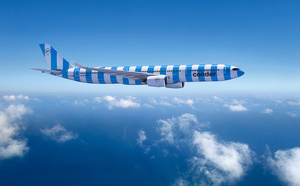



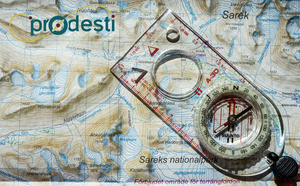






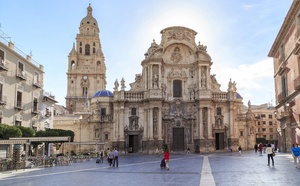




![Tourisme : où sont passés les Chinois ? [ABO] Tourisme : où sont passés les Chinois ? [ABO]](https://www.tourmag.com/photo/art/large_16_9/87929923-62307593.jpg?v=1744721842)

